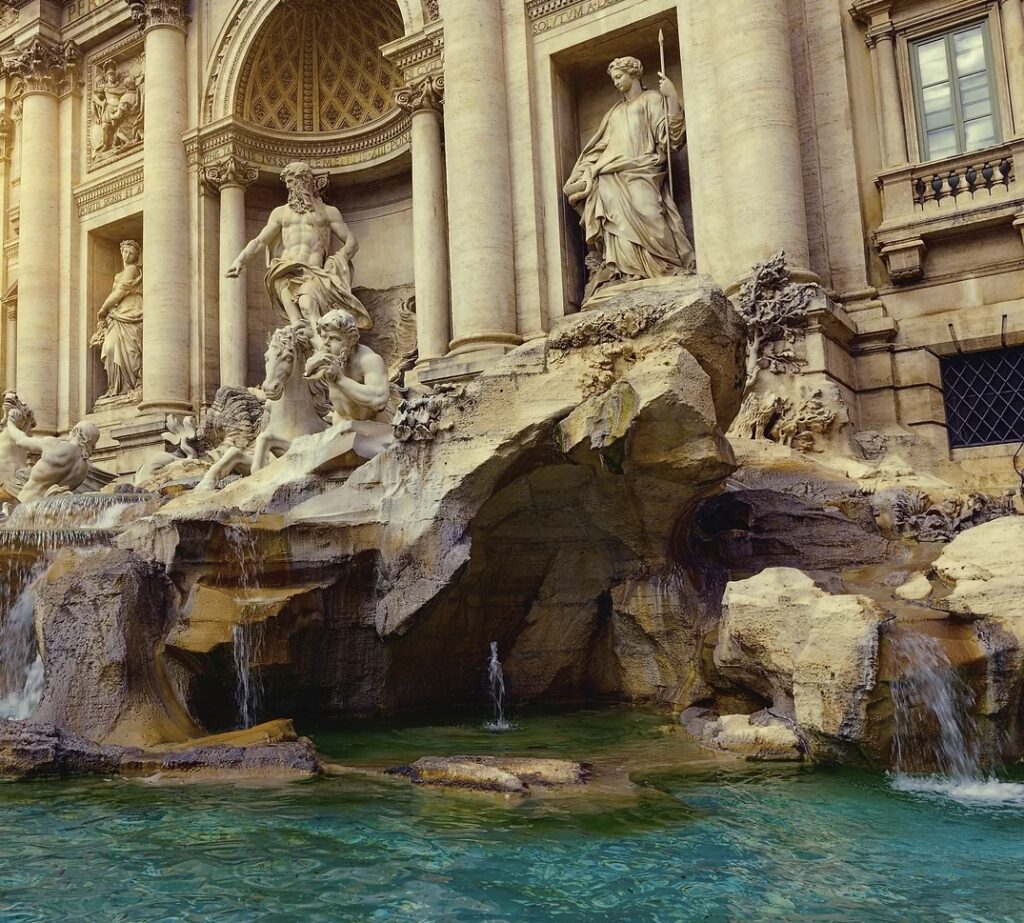Few landmarks in the world can rival the Trevi Fountain for its combination of history, artistry, and cultural significance. Nestled in the heart of Rome, this magnificent Baroque fountain has long been a symbol of the Eternal City’s grandeur, attracting millions of visitors annually. Following a meticulous three-month restoration, the Trevi Fountain reopened just in time for the Roman Catholic Church’s Jubilee Year, a period of celebration and reflection for Catholics worldwide. The fountain, now more dazzling than ever, continues to capture the imagination of tourists and locals alike, serving as both a historical monument and a cultural centerpiece.
The Jubilee Year and Trevi’s Revival
The restoration of the Trevi Fountain could not have come at a more opportune moment. The Jubilee Year, which began on Christmas Eve 2024 and runs until January 6, 2026, is a significant event in the Roman Catholic Church, attracting pilgrims from all over the world to Rome. This holy year emphasizes forgiveness, renewal, and charity, making it a fitting backdrop for the reopening of a fountain that has symbolized renewal and hope for centuries.
Record-Breaking Crowds Expected
The Jubilee Year is expected to draw a staggering 32 million visitors to Rome, 10 million more than last year’s record. The Trevi Fountain alone is anticipated to see around 10,000 tourists each day. This influx of visitors underscores the fountain’s status as a must-see destination, but it also poses logistical challenges for the city.
Managing the Crowd Surge
Due to the overwhelming popularity of the fountain, city officials have implemented measures to preserve its charm and ensure visitor safety. The sunken area near the fountain, where tourists traditionally gather, now allows only 400 people at a time. Rome Mayor Roberto Gualtieri has even hinted at the possibility of introducing a “nominal fee” for access in the future, a move that could help fund maintenance and crowd management.
A Brief History of the Trevi Fountain
The Trevi Fountain’s origins date back to ancient Rome, when it marked the endpoint of the Aqua Virgo aqueduct, constructed in 19 BCE. This aqueduct supplied water to the Roman baths and fountains in the city center. The fountain we see today, however, was designed in the Baroque style by Nicola Salvi and completed in 1762 by Giuseppe Pannini.
A Masterpiece of Baroque Art
The fountain’s design centers on the god Oceanus, who stands triumphantly in the middle, flanked by Tritons and sea horses. The surrounding sculptures represent abundance and health, themes that align with the fountain’s original purpose as a water source. The intricate details and grand scale of the fountain make it one of the most iconic examples of Baroque art in the world.
Cinematic Legacy
The Trevi Fountain has also cemented its place in popular culture, thanks in part to its appearance in films like La Dolce Vita and Roman Holiday. These cinematic moments have immortalized the fountain as a symbol of romance and whimsy, further enhancing its allure.
The Fountain’s Modern-Day Role
While the Trevi Fountain is steeped in history, it continues to play an active role in the lives of Romans and tourists alike. It is a place of celebration, reflection, and tradition, with visitors flocking to it not just to admire its beauty but to participate in the ritual of tossing a coin.
The Coin-Tossing Tradition
The fountain is perhaps best known for the custom of throwing coins into its waters. According to legend, tossing a coin over your left shoulder with your right hand ensures a return to Rome. This tradition has been embraced by millions, with more than $1 million worth of coins collected from the fountain annually.
A Charitable Purpose
Every year, over $1 million worth of coins are tossed into the iconic Trevi Fountain, making it not only a symbol of beauty and tradition but also a force for good. Far from being a casual tourist ritual, this tradition funds significant charitable efforts. The money collected is carefully retrieved and directed toward impressionable causes, such as supporting soup kitchens, providing care for individuals with Alzheimer’s disease, and funding programs for vulnerable youth. This unique blend of cultural heritage and philanthropy highlights the Trevi Fountain’s modern role as a beacon of hope and generosity, transcending its status as a tourist attraction. By turning wishes into tangible support for those in need, the fountain exemplifies how history and tradition can be harnessed for contemporary good. While its dazzling beauty continues to draw millions of visitors annually, the fountain’s charitable legacy ensures its significance extends far beyond its Baroque artistry.
As from being a mere tourist gimmick, the money collected from the fountain is again ultimately used for charitable purposes. The funds are donated to programs that provide soup kitchens, and support for young people. This transformation of coins into compassion underscores the fountain’s modern-day role as a source of renewal and hope.
Unusual Finds in the Fountain
Coins aren’t the only objects tossed into the Trevi Fountain. Over the years, city officials have retrieved a variety of unexpected items, including umbrellas, drinking glasses, guitar picks, keys, marbles, shells, and even subway tokens. These objects reflect the diverse stories and emotions of the people who visit the fountain.
The Logistics of Maintenance and Access
The sheer popularity of the Trevi Fountain comes with challenges, particularly in terms of maintenance and crowd management. The recent restoration, which lasted three months, involved cleaning the travertine stone, repairing cracks, and ensuring the fountain’s hydraulic systems were functioning perfectly.
Controlled Access
To address concerns about overcrowding, the city has limited the number of people allowed in the sunken area around the fountain at any given time. This measure not only preserves the integrity of the site but also ensures a more enjoyable experience for visitors. The potential introduction of an access fee could further help manage crowds and fund ongoing maintenance.
A Hydration Station
One lesser-known feature of the Trevi Fountain is its tap, which allows visitors to fill their bottles with water. This quirky addition, humorously described as being infused with the flavor of coins, adds a practical and playful touch to the fountain’s offerings.
Trevi Fountain: A Symbol of Renewal
The reopening of the Trevi Fountain during the Jubilee Year is a poignant reminder of its enduring significance. For centuries, the fountain has been a source of inspiration, renewal, and generosity, embodying the spirit of Rome itself. Whether viewed as a masterpiece of Baroque art, a cultural icon, or a symbol of hope, the Trevi Fountain continues to captivate the hearts of those who visit it.
The Trevi Fountain’s reopening marks a new chapter in its storied history, reaffirming its status as a symbol of Rome’s timeless beauty and resilience. As millions of visitors flock to the fountain during the Jubilee Year, it remains a place of wonder, reflection, and connection—a true gem of the Eternal City. Whether you’re tossing a coin, admiring its artistry, or simply soaking in its atmosphere, the Trevi Fountain offers an experience that is as unforgettable as Rome itself.
No comments yet.








